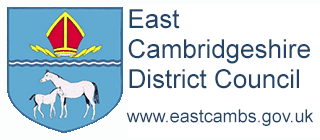Post date:
The journey to net zero by 2040 and a vision of a landscape thriving with wildlife are on track thanks to a year of action by East Cambridgeshire District Council.
Figures published this month show the Council has already started to make cuts to its own carbon emissions, with a massive 76 less tonnes of carbon emitted in 2020/21 compared with what it emitted before the Council declared a climate emergency in 2019.
That is equivalent to the weight of six double-decker buses or 15 African elephants.
The savings have been reported in its latest Environment Plan which documents how the Council is seeking to achieve an 80% cut in emission by 2030 and become net carbon zero by 2040.
As well as cutting its own emissions, the Council is also committed to supporting others to reduce their own environmental impact, as well as acting to help nature recover and thrive throughout the district.
Initiatives which have contributed to the carbon savings and nature recovery in the last 12 months include:
- The opening of Cambridgeshire’s largest tree maze in Ely Country Park, which as well as being fun and free also helps capture carbon from the 5,000 hornbeam trees planted
- The launch of a community orchard programme, which has helped create or regenerate 20 publicly accessible orchards across the district
- Undertaking energy efficiency improvements at the Council’s offices in Ely, including installing more energy efficient glazing and LED lighting
- Implementing a new grass cutting and wildflower management plan to help support greater biodiversity
Over the last 12 months, the Council estimates it had a carbon footprint of 1,241 tonnes of Co2e (carbon dioxide equivalent). To achieve net zero by 2040 its focus will be to continue to adopt challenging organisational targets to reduce energy use whilst at the same time generate its own renewable electricity.
Future initiatives over the coming years are likely to include:
- Reducing the emissions of its waste collection fleet – currently the largest emitter of Co2 – by investing in low carbon or electric vehicles
- Using the Council’s own office space and other buildings to generate renewable electricity
- Working with Sanctuary Properties, low-income private homes and park homes to carry out home energy improvements to hundreds of energy inefficient properties
- Continuing to purchase green energy from the National Grid
- Minimising staff business miles
Councillor Anna Bailey, leader of East Cambridgeshire District Council, said: “We are really pleased to see our carbon emissions starting to come down, despite the on-going challenges we have all faced recently from Covid to the cost of living.
“It’s important that despite these issues we don’t lose sight of the huge challenge we face around climate change and reversing biodiversity loss. And it strikes me how much these things are interlinked.
“For example, if there is one thing the Covid pandemic taught us, it is how much we value high-quality parks and open spaces, watching wildlife in their natural habitats and taking great pleasure from a new area sown with wildflower seeds. And if these are all local, we travel less and spend less money getting there, for the benefit of the environment and our pockets.
“At the same time, the costs of living rises are causing everyone real difficulties, especially the eye-watering rise in our gas, electricity, oil and petrol prices. By reducing our fossil fuel consumption through better home insulation or driving a little bit less, we can help offset those higher prices as well as doing our bit to reduce carbon emissions into the atmosphere.
“East Cambridgeshire District Council is committed to doing everything it can to help reach our target of becoming net carbon zero by 2040 and I very much look forward to seeing more and more exciting initiatives put in place over the coming years.”
